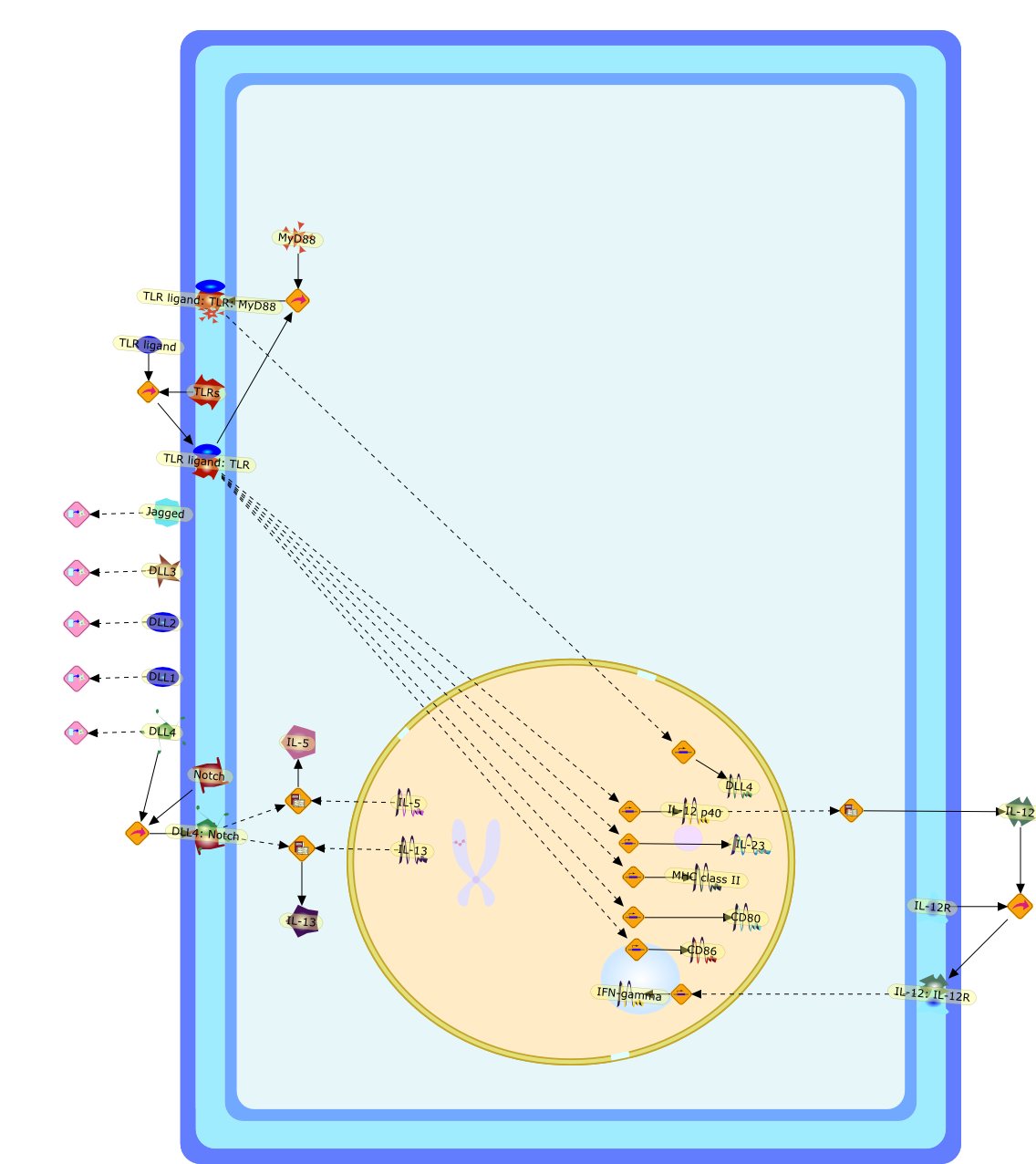| Original Literature | Model OverView |
|---|---|
|
Publication
Title
Toll-like receptors, Notch ligands, and cytokines drive the chronicity of lunginflammation.
Affiliation
Immunology Program and Department of Pathology, University of Michigan MedicalSchool, Ann Arbor, Michigan 48109-2200, USA.
Abstract
Current dogma supports the concept that the expression of a disease-inducingsignature cytokine phenotype is important to the maintenance stage of chroniclung disorders. This cytokine phenotype has been characterized as a polarizationtoward type 2 cytokines, which are profibrotic and immunoregulatory. The biologyof this latter activity could mechanistically explain pathogen-inducedexacerbation of chronic lung inflammation, as a skewed cytokine profile in thelung alters dendritic cell function, activates fibroblasts, and facilitates asubsequent "second hit" by an infectious pathogen. In this setting, cytokinebiology is also linked to Toll-like receptors (TLRs) in the maintenance of lungimmunity, as the activity of this receptor-ligand system by both leukocytes andstromal cells is likely an important component of disease chronicity. Theparticipation of dendritic cells via TLRs in chronic lung disease couldfacilitate communication circuits established between antigen-presenting cellsand lymphocytes. Data suggest that TLR activation via myeloid differentiationfactor 88 adaptor protein leads to the induction of a Notch ligand known asDelta-like-4 on dendritic cells that activate the Notch receptor on T cells,promoting a helper T-cell type 1 cytokine response. It is likely that theevolution of host defense signals designed to recognize patterns emitted from ahostile microbial environment may now be superimposed on adaptive immunity andprovide the underpinning to support the maintenance of chronic lung disease.
PMID
18073395
|




